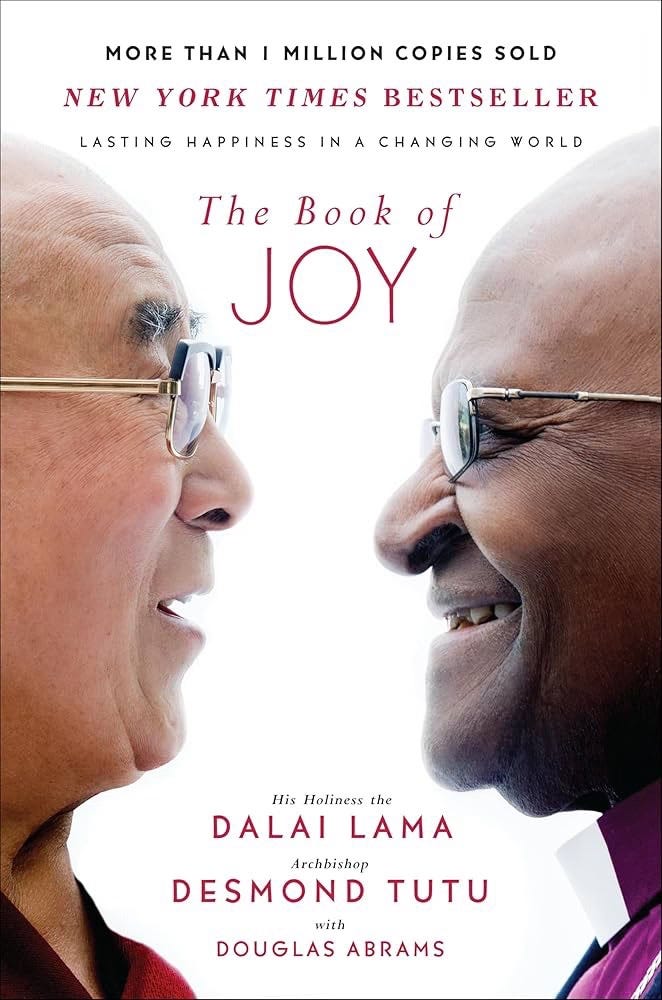The Joy Rebellion: The Science of Choosing Delight
Your Practical Toolkit for Healing, Reconnecting, and Finding Joy That Lasts
We often treat joy like a luxury, even something frivolous, reserved for easier times. But real joy flows deeper. In challenging moments, it becomes a quiet form of resistance. A way to stay rooted in light, even when the world feels heavy.
Joy is a force against those who would define us, divide us, or disconnect us from the beauty, goodness, and possibility all around us. As leaders such as the Dalai Lama and Nobel Peace Prize winner Archbishop Desmond Tutu remind us, joy isn’t optional. It’s how we survive, celebrate, and keep going. Experts share insights on how to activate your joy, for good.
Joy Vs. Happiness
Definitions vary, but happiness is often described as a positive emotion activated by external events, a reaction to good things happening. Joy, on the other hand, has been described as an intense, internal experience of positive emotion—a sense of well-being and contentment that comes from within.
Joy is a choice. A mindset. A skill. It is also a virtue that can be cultivated with practice and purpose. And when nurtured, it helps individuals act in ways (either quietly or with more communal celebratory rejoicing) that benefit both themselves and their communities.
How Joy Strengthens Us
Professor Barbara Fredrickson’s groundbreaking work, including the broaden-and-build theory of positive emotions, shows how positive emotions, especially joy, can:
Enhance memory
Promote creativity
Boost resilience
Improve physical health
Expand and foster social connections
Promote the common good
Strengthen intellectual and psychological resources
In short, joy makes us stronger.
Dr. Pamela Ebstyne King, Stanford alumnus and executive director of the Thrive Center for Human Development, told me:
“Joy activates us. When the world is suffering...we need to be able to hone our centers of joy to keep going…Because that joy, ultimately, isn’t just for our pleasure. It is ultimately about enabling us to be purposeful. And so, we see joy that way – I need to smell the flowers…to continue contributing, solving problems, and caring for people.”
“Joy helps to align us to who we are and who we’re becoming; align us to the relationships that matter most to us; and also aligns us to our deepest values and convictions,” says King. She mentions the Ignatian prayer, which includes reflection at the end of each day on where you sensed being most alive, adding that this gives insight and uncovers your sources of joy.
King referenced Yale Divinity School theologian Willie James Jennings, whose Theology of Joy highlights how joy can be an act of rebellion against the status quo.
“I look at joy as an act of resistance against despair and its forces...Joy in that regard is a work, that can become a state, that can become a way of life.” — Willie James Jennings, Yale Divinity School
What Archbishop Desmond Tutu and the Dalai Lama Taught Us About Joy
Despite unimaginable suffering, Archbishop Desmond Tutu and the Dalai Lama cultivated joy as a practice. In The Book of Joy: Lasting Happiness in a Changing World and in the documentary Mission: Joy – Finding Happiness in Troubled Times, their friendship and shared wisdom offer profound insight:
“What the Dalai Lama and I are offering,” the Archbishop added, “is a way of handling your worries: thinking about others. You can think about others who are in a similar situation or perhaps even in a worse situation, but who have survived, even thrived. It does help quite a lot to see yourself as part of a greater whole.
Once again, the path of joy was connection, and the path of sorrow was separation. When we see others as separate, they become a threat. When we see others as part of us, as connected, as interdependent, then there is no challenge we cannot face—together.” — Desmond Tutu, The Book of Joy: Lasting Happiness in a Changing World
“Adversity, illness, and death are real and inevitable. We chose whether to add to these unavoidable facts of life with the suffering that we create in our own minds and hearts... the chosen suffering. The more we make a different choice, to heal our own suffering, the more we can turn to others and help to address their suffering with the laughter-filled, tear-stained eyes of the heart. And the more we turn away from our self-regard to wipe the tears from the eyes of another, the more—incredibly—we are able to hear, to heal, and to transcend our own suffering. This is the true secret to joy.” — Dalai Lama XIV, The Book of Joy: Lasting Happiness in a Changing World
Training for the Joy Rebellion
So, how do we build a more joyful life, especially when things are hard?
For many, enduring joy comes from participating in a social life and enjoying the strengthened relationships that result.
Professor Sonja Lyubomirsky, a psychologist at the University of California-Riverside and author of The How of Happiness, shares that deep connection matters:
“Research shows that deep conversations, when you’re really sharing something important to you, listening in such a way that you remember what they’re saying rather than thinking about what you’re going to say next, when you show curiosity - that is what makes a difference.”
“Doing things in sync with others, whether dancing, marching, or singing, can also make people feel connected and joyful.”
Improving positive connections and relationships can nurture joy. Time spent with friends, positive interactions with strangers, neighbors, or family members, small acts of kindness, or shared laughter can all help.
Designing For Joy
Designer and author Ingrid Fetell Lee believes joy can be sparked by the aesthetics of our surroundings. Lee has found remarkable similarities in what elicits joy across age, gender, and ethnicity. Her TED Talk and book Joyful: The Surprising Power of Ordinary Things to Create Extraordinary Happiness, explore how:
Pops of bright colors, round shapes, symmetry, abundance, and multiplicity can all spark joy, along with a feeling of lightness or elevation, nature, and playful elements. From treehouses, cherry blossoms, rainbows, to bubbles, confetti, and swimming pools, to fireworks, hot air balloons, and ice cream cones (especially those with sprinkles!)
We’ll explore this more later this month in Well Happy Thrive.
Photo by Matt Hoffman
Your Joy Rebellion Toolkit
Express gratitude: Write a daily gratitude journal, a thank-you note, or help a neighbor
Move or sing with others: Dancing, singing, and even walking in sync can create joy
Practice mindfulness: Being fully present in the moment can help deepen joy and connection
Engage your senses: Revel in July 4th fireworks, write your name in a nostalgic summer sky with a sparkler, deeply kiss your beloved, listen to joyful music (a road trip is not a pre-requisite!), smell pine trees, or toast marshmallows over a campfire
Read joyful poetry: Let uplifting language shift your mood or spark insight
Set boundaries: Take a break from social media or set limits on draining interactions
Create joyful surroundings: Think light, color, play, surprise, and celebration
Start a sensory ritual: Light a candle, brew your favorite tea, or simply savor a small moment of beauty. These intentional practices can become anchors of joy.
Joy connects us. Joy restores us. Joy helps us endure.
It’s not frivolous, it’s fuel.
Joy can be a force for good, a uniting energy that reminds us what’s worth protecting. It helps us align with what matters most: to ourselves, to one another, and to the more joyful world we still believe in and are building, one act at a time.
What’s one act of joy you’ll choose today?
If this resonated, please share it. And subscribe for weekly reflections on the art and science of thriving.
Until next time,
Alene




